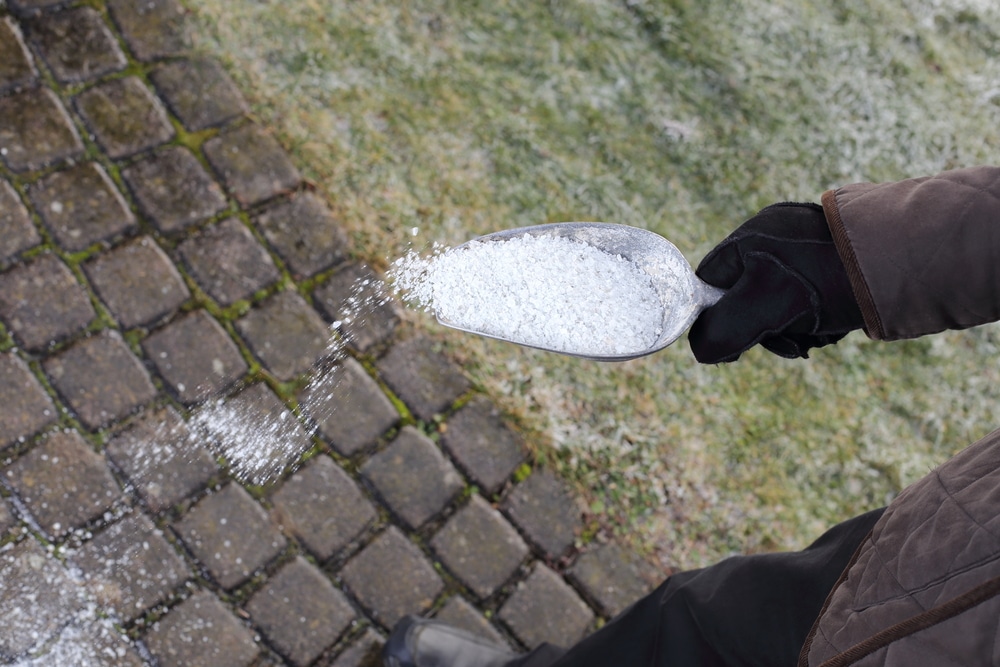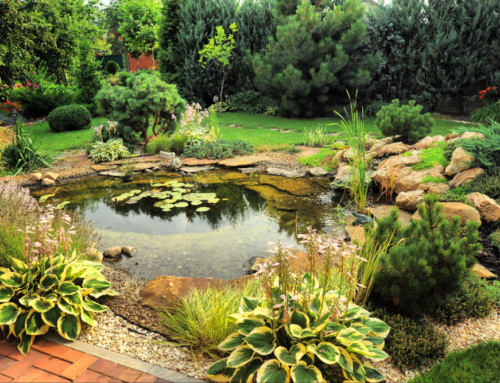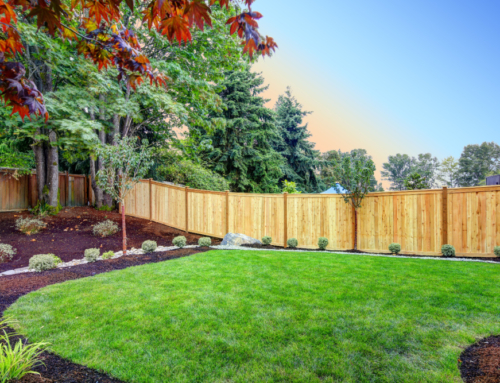Winter is almost here, and with it comes lawn and path maintenance worries. The severe freezing and subsequent snow, ice, and sleet make driving difficult and affect your lawn. For instance, circumstances may force you to sprinkle salt on your driveway and pathways to melt the snow. And while this will accomplish the task, it may have unintended consequences on your lawn, especially the areas bordering the paths.
Protecting Your Lawn from Salt Damage in Winter
Since you can’t forego salt entirely during winter, the focus should be on mitigating damage to your lawn. To that end, the following techniques may be of help:
Understand What Salt Damage Looks Like
You can’t solve a problem if you do not know what it looks like. As such, your first course of action is to understand what a lawn damaged by salt looks like. As you will see, salt kills the grass, resulting in strips of brown grass along the pathways where you sprinkled the salt. You do not need to use a lot of salt to cause damage. Any salt that is strong enough to penetrate the ice is strong enough to dry out the roots of your grass.
Typically, grass damaged by salt rebounds when it rains or is watered again. Salt is not a toxin and does not kill the grass – it just absorbs most of the water in the roots. As such, you need to detect and repair the damage as early as possible.
Take Protective Measures
It is not a guarantee that your grass will recover from salt damage. You should therefore aim towards preventing the damage in the first place. Below are some of the methods that are most effective for this end:
Use Borders – Draw borders between the lawn and the pathways you intend to salt using some landscaping tools.
These borders should be a few inches between the grass and the path to give you some sprinkle room.
Burlap Sacks – If you can’t do the bordering, try to cover the outer edges of the lawn with burlap sacks before you apply the salt.
You can also visit your garden store and find out if they stock other cheaper protective fabrics.
Think Beyond Salt – While salt is the perfect de-icer, it can seriously damage your grass and any plant it comes into contact with.
While it is not advisable to use commercial chemicals, you can experiment with standard DIY solutions and find out what works best for you. Some of these include; vinegar, sand, alfalfa meal, cat litter, coffee grinds, and sugar beet juice.
Use the Recommended Salt Type
There are many different types of salt, each with its properties. Unfortunately, most of them are not good de-icers. In most cases, the cheaper salts are more likely to cause extensive damage to your lawn as they often contain harsh chemicals. On the other hand, the more expensive options are generally much gentler. Below are some of the de-icing salts that are known to be soft on grass:
Calcium Chloride – This is a good de-icer and is pretty soft on grass compared to other options like rock salt.
You do not want to use it on or near concrete, though, as it can cause the concrete to shrink, potentially causing cracks.
Magnesium Chloride – While it is relatively more expensive than other salts, it is gentle to grass and cement.
However, avoid using it on delicate plants and flowers, as it can dehydrate them to near death.
Potassium Chloride – This type of salt is also a bit expensive but happens to work very slowly, which makes it safer for grass.
The only problem is that you may be tempted to use more of it to hasten the melting process, which may damage your grass and other plants.
What to do if Your Lawn is Salt Damaged
If you note that your grass is turning yellow after exposure to ice melt, wait until the snow dissipates, then douse the damaged areas with a good amount of water to rinse the grass and the soil underneath it. Do not stop there. Flood the area and effectively soak the grass for a few days. This will help you eliminate residual salts and rehydrate the grassroots, to ensure a speedy recovery. However, you should only water the grass when the temperatures are above the freezing point to prevent ice formation.
If the damage is extensive, soaking alone won’t help much. In that case, try using some pelletized gypsum soil conditioner. The conditioner promotes moisture retention, re-energizes the grass, and encourages new growth.
At Cerullo Landscape, we have a team of experts specializing in lawn care. Contact us today, and let us help you care for your lawn effectively during the winter season.






